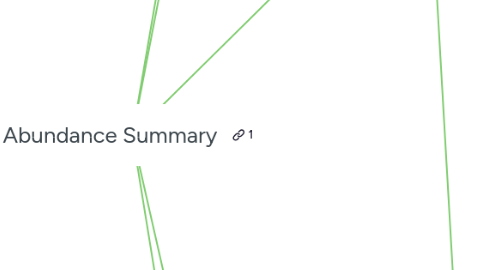
1. 1-Sentence-Summary:
1.1. Abundance shows you the key technological trends being developed today, to give you a glimpse of a future that’s a lot brighter than you think and help you embrace the optimism we need to make it happen.
2. Favorite quote from the author:
2.1. "Abundance is not about providing everyone on this planet with a life of luxury - rather it's about providing all with a life of possibility." - Peter Diamandis
3. 3 lessons:
3.1. Screw the news and irrational fears, today is better than ever.
3.1.1. If you’re convinced we’re in a permanent, downward spiral and everything’s going to get worse, all the time, no matter what we do, you’re what Peter Thiel calls an indefinite pessimist in Zero to One.
3.1.2. At least this state is curable, and you’re most likely in it for the two following reasons:
3.1.2.1. Your lizard brain dominates your behavior.
3.1.2.1.1. The first factor describes the ancient structure of our brain, which isn’t all too suited for the modern world.
3.1.2.1.2. What Seth Godin describes as the hungry, scared, angry and horny lizard brain, which must be quieted, is truly your amygdala, your fear radar, which puts you in fight or flight mode every time it sees even the slightest threat.
3.1.2.1.3. Most of the things that trigger it today, aren’t real threats, however, because neither a yelling boss, nor a ringing phone or pressing the publish button on a blog post will kill you.
3.1.2.2. You look at the news a lot.
3.1.2.2.1. The news blows everything out of proportion and focuses on the bad headlines, because shock, horror and fear get the most clicks.
3.1.3. Calm down, cut the news chord and look at some statistics: you’ll see the world has never been a better, safer place to live a long, healthy, wealthy and abundant life.
3.2. We will solve a lot of the world’s biggest problems simultaneously.
3.2.1. It’s right that we face many complex problems today, but looking at them individually is a mistake.
3.2.1.1. The future will sure seem hopeless if you think of our increasing need of energy, climate change, environmental pollution, population growth and world hunger as separate problems.
3.2.1.2. But they’re not.
3.2.1.3. For example, eradicating Malaria will not only mean better health for African people, it’ll also improve their economic situation, because less people will be unable to work and more tourists will flock to the continent, because it is now safer.
3.2.1.4. Also, since most cases affect children, as mortality rates go down, so will birth rates.
3.2.1.4.1. There’s no need for African mothers to bear seven children, when they can be sure that their first two kids will actually survive.
3.2.1.5. Another example:
3.2.2. The world’s most complex problems all relate to each other, which means we never solve just one of them – progress always means progress in several areas.
3.3. Instead of thinking outside the box, think inside the right-sized box.
3.3.1. America is often considered to celebrate failure, a culture that’s often criticized by other countries
3.3.1.1. But USA’s “failure culture” is not about trying to fail, it’s about the freedom to experiment and the spirit to get up and try again after learning from a mistake.
3.3.2. Nobody ever tries to fail on purpose, but that doesn’t mean you should stop trying when what you’re doing is important.
3.3.3. Innovation competitions with small prizes encourage the right kind of behavior, because the prizes are not big enough to warrant huge companies’s interest, but force small teams to innovate with what they’re given.
3.3.4. The problems we’re trying to solve stem from current limitations we can’t move past, so confining ourselves on purpose is how we can learn to work with what we’ve got to create something better.
3.3.5. It’s not so much about thinking outside the box as it is about placing yourself inside the right-sized box and figuring out how to get out of it.
